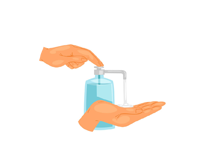Laropiprant
Introduction
Laropiprant is a selective prostaglandin D2 receptor antagonist used primarily in combination with niacin (vitamin B3) to reduce flushing—a common side effect of niacin therapy. It is typically prescribed to patients undergoing treatment for high cholesterol or dyslipidemia, where niacin helps raise HDL (good cholesterol) and lower LDL (bad cholesterol) and triglycerides. By blocking the flushing response caused by niacin, Laropiprant helps improve patient compliance and comfort during long-term cholesterol treatment.
Medicine Not Available for Laropiprant
Uses of Laropiprant
- Used in combination with niacin for cholesterol management
- Reduces flushing associated with niacin intake
- Supports therapy in patients with mixed dyslipidemia
- Helps manage high triglyceride levels
How Laropiprant works
Laropiprant works by selectively blocking the prostaglandin D2 (PGD2) receptor subtype 1 (DP1), which is responsible for vasodilation and flushing triggered by niacin. By inhibiting this receptor, it significantly reduces the skin redness, warmth, and tingling that patients often experience after taking niacin.
Benefits of Laropiprant
- Minimizes niacin-induced skin flushing
- Improves tolerance to cholesterol-lowering niacin therapy
- Supports cardiovascular health by enhancing niacin adherence
- Offers relief from discomfort without reducing niacin efficacy
How to take Laropiprant
Laropiprant is typically taken in combination with niacin as a fixed-dose tablet. It should be taken once daily with food, preferably in the evening. Do not crush or chew the tablet. Follow the dosage as prescribed by your healthcare provider and do not stop the medication without consulting them.
Type of Dosage Available
- Oral tablets (in combination with niacin)
Side effects of Laropiprant
- Headache
- Diarrhea
- Nausea
- Rash
- Muscle pain (in combination therapy)
- Increased liver enzymes (with prolonged use)
Safety advice
- Use only as part of niacin combination therapy
- Consult your doctor if you have liver disease or gallbladder issues
- Avoid alcohol during treatment to reduce liver risk
- Regular liver function tests may be required
- Not recommended for pregnant or breastfeeding women without medical advice
Frequently Asked Questions (FAQs)
Q: What is Laropiprant used for?
A: Laropiprant is used to reduce flushing caused by niacin in cholesterol-lowering therapy.
Q: Can I take Laropiprant alone?
A: No, Laropiprant is only used in combination with niacin and has no effect on cholesterol levels when taken alone.
Q: Is Laropiprant safe for long-term use?
A: It is generally safe under medical supervision, especially when liver function is monitored regularly.
Q: Can I take Laropiprant with other cholesterol medicines?
A: Yes, but always consult your doctor before combining it with other lipid-lowering drugs like statins.
Q: Does Laropiprant reduce the effectiveness of niacin?
A: No, it only reduces the flushing side effect and does not impact the cholesterol-lowering benefits of niacin.
Download India's most affordable pharmacy app
- Compare with medicine prices
- Save upto 90% on your medicine bills

Temperature Controlled storage and delivery

Regular Sanitization

Disinfected Packaging









 Added!
Added!